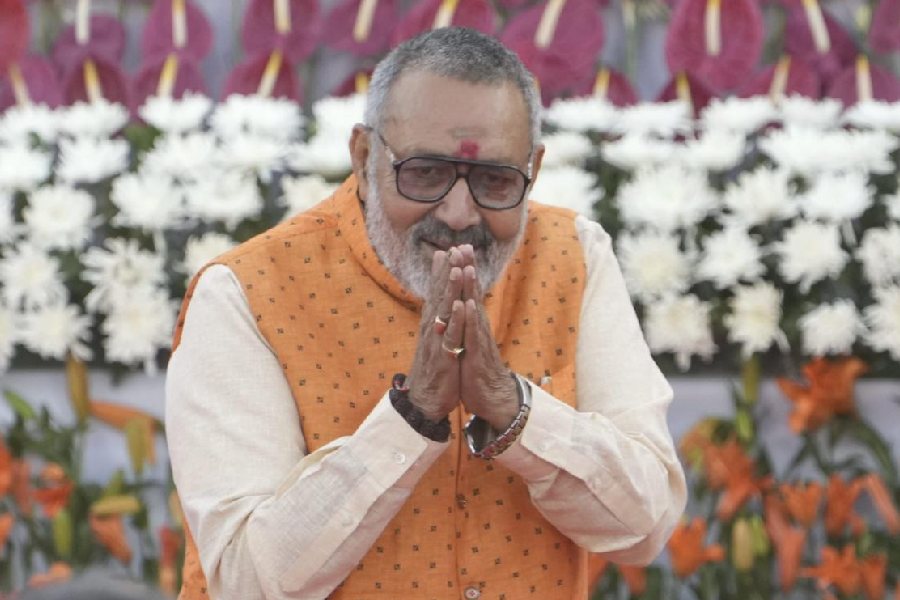Union textile minister Giriraj Singh on Saturday said that the priority of the government would be to ensure better remuneration for handloom workers because hand-woven clothes are popular worldwide.
He added that the Centre would address the labour shortage in the textile sector across the country and would invest heavily in research and development in carbon fabrics and geotextiles to cut imports.
“There is a craze about slow fabric or cloth, handmade textile across the world. We have a vast handloom sector, which can cater to it. Our aim will be to provide value addition and techniques to the handloom sector so that the people engaged in it earn more,” Singh told The Telegraph.
The Union minister was in Patna to meet Bihar industries minister Nitish Mishra and officials of the department to explore the opportunities to collaborate to set up textile manufacturing clusters in the state.
Slow cloth or slow fabric is a philosophy that provides meaning, individuality, artistic enterprise and uniqueness to textile manufacturing either by hand or by the use of simple machines. It is opposed to modern production that encourages sameness, mediocrity, speed, efficiency, overproduction and wastefulness.
Slow fabric is produced in small quantities to avoid overproduction and textile waste. It is ethical, sustainable and environment friendly — normally using natural fibres — with a transparent manufacturing process to trace its origins.
Singh pointed out that the textile sector in the country was the second largest after agriculture, with around 4.5 crore people engaged in it, but was facing a labour shortage.
“People manufacturers’ associations from Tirupur textile hub in Tamil Nadu met me recently and complained about being bogged down by labour shortage. The government will address this issue by providing skilled workers from labour surplus states,” he told this newspaper.
The Union minister added that the central government was aiming at adding 50 lakh people over the next five years to the already 4.5 crore people engaged in the textile sector.
Talking about modern fibres, he said that the central government would invest ₹1,400 crore for research and development in carbon fabrics and geotextiles “to cut down the dependence on imports”.
Carbon fabrics are made from carbon fibres, also known as graphite fibres. They are five times stronger than steel, twice as stiff, yet lighter than it. They are highly chemical resistant and are used in aerospace, automobile, military, recreational applications, and a host of other industries.
Geotextile fabrics are made from synthetically engineered materials and were originally developed to provide soil stability, as well as, to distribute load over a wider area. They are now used in roads, airfields, railroads, embankments, reservoirs, canals and retaining structures.
Earlier, on his arrival in Patna, Singh attacked RJD leader Tejashwi Prasad Yadav for making false statements about the central and Bihar governments to mislead the people.
“He (Tejashwi) is still indulging in this despite the fact that the public refused to buy the rumours he spread during the Lok Sabha elections and taught him a lesson,” Singh added.










